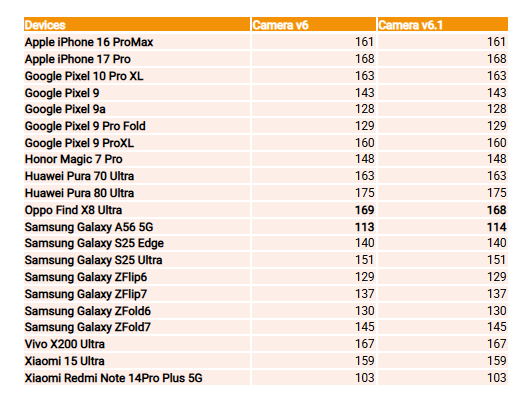Smartphone
In version v6.1, DXOMARK has introduced a series of optimizations, on two specific areas:
-
- Photo texture: Update to the motion blur testing as well as color accuracy measurements, supporting both SDR and HDR image formats
- Video color: Refined while balance and color rendering assessment for both SDR and HDR formats, taking into consideration the specific white point for each laboratory tested scene illuminant
Motion blur
The motion blur metric measures the camera ability to freeze motion in a scene during capture. Motion blur is a critical factor when capturing scenes with movement. Devices that minimize motion blur in well-lit conditions are ideal for fast-moving subjects, such as sports events or outdoor photos of children. Those that also maintain low motion blur in low-light conditions excel at capturing dynamic moments in settings like concerts, birthday parties, or weddings
In our labs, the setup includes a linear moving object, framed in a reproducible way, with constant and known speed (400mm/s at a distance of 110 cm from a camera, with a 23mm equivalent focal length. The captured image is analyzed to measure the extent of visible motion blur in the image. The blur is measured in millimeters, assuming a printing landscape photo with a height of 200mm.
In the Camera protocol v 6.1, motion blur measurements are now supported for both SDR and HDR formats, reflecting the technological advancements implemented by manufacturers. According to our scoring methodology, if HDR is available in a publicly accessible or documented format, motion blur testing is conducted in HDR.
Below are some examples of measurements and what can be observed in terms of motion blur in the images. The examples clearly show that Google and Vivo perform identically at 100 Lux, but not at 20 Lux. Similarly, at 20 Lux, the Vivo and Samsung behave similarly, as indicated by the measurement.
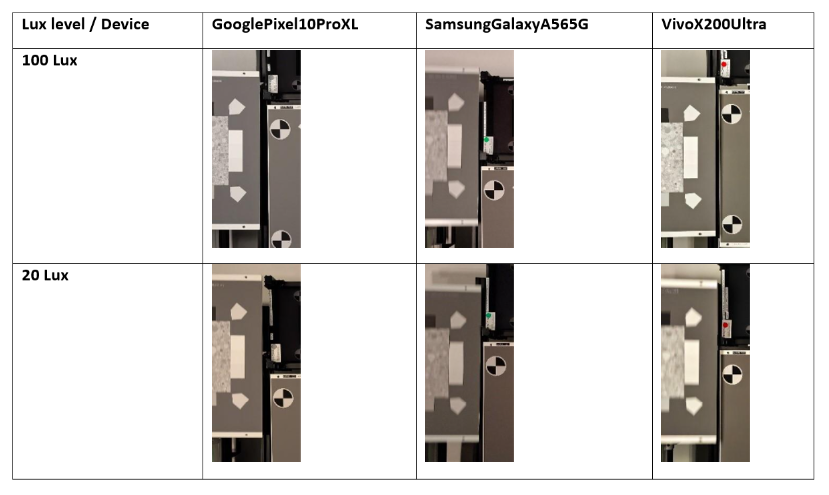
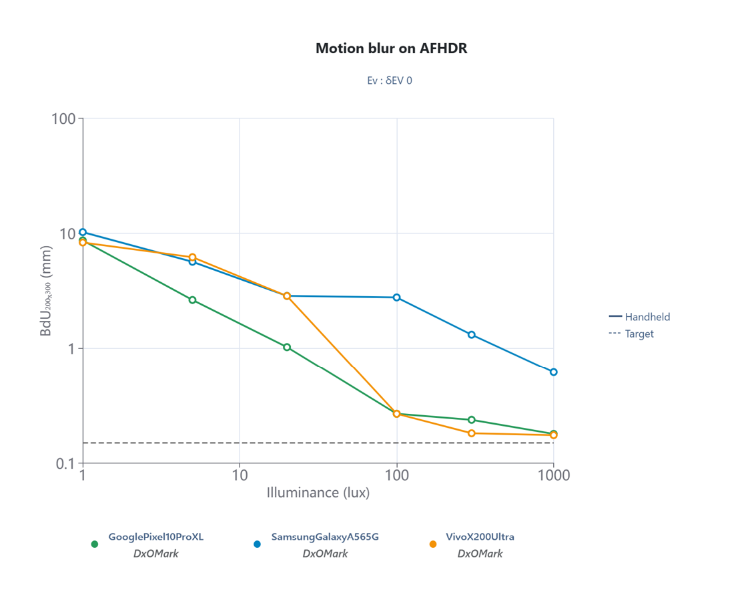
With the metric update, our scores and rankings have evolved, and modifications are reflected in the below table
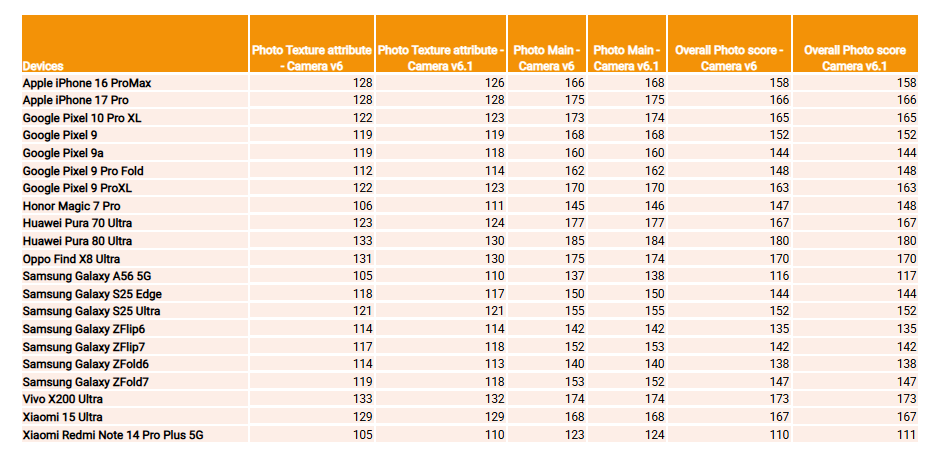
Video color
In this area, two metrics have been updated: white balance and color rendering for HDR formats.
The update enhances measurements by taking into account the white point of the illuminant in each lab-tested scene, providing greater granularity and more precise evaluations for these two criteria. As a result, the quality of white balance and color rendering assessments is improved across a wide range of simulated lighting conditions in DXOMARK laboratories. According to our scoring methodology, if HDR is available in a publicly accessible or documented format, motion blur testing is conducted in HDR.
It is important to note that our overall methodology remains unchanged for these metrics. Objective video color measurements represent only one component of the overall color performance assessment and are always complemented by qualitative analyses based on natural scenes. Therefore, while this update does not significantly impact overall camera scores, it may cause minor variations in video color scores.
Below is a summary of the score changes specifically resulting from this update.
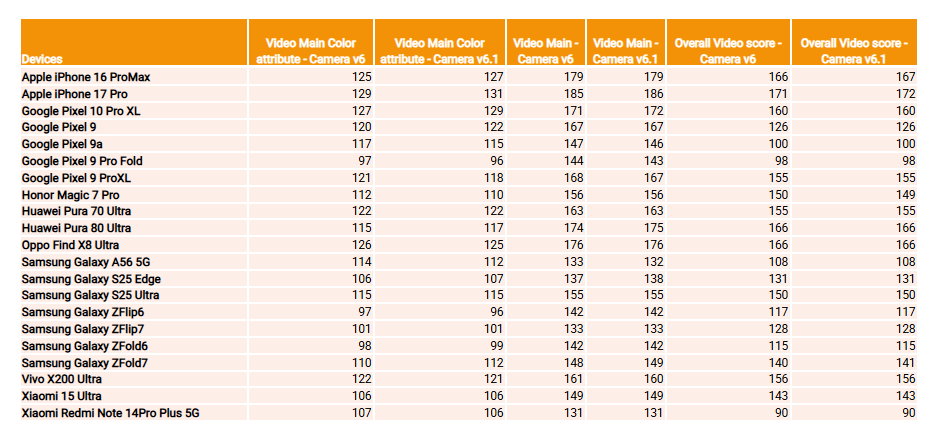
The two updates have led to changes in our rankings. Please see the impacts below. Note that rounding in our calculations may slightly affect the overall scores.
